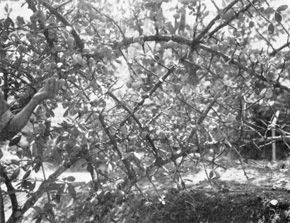
Figure 20. Imbe, Garcinia livingstonei, a prolific fruit from a strange tree. Garcinia mangostana L. Common names: mangosteen (English); manggis (Malaya); mangoustanier (French). Origin: Southeast Asia. Distribution: Pantropic but rare outside Asia. Cultural requirements: Hot, wet tropical lowlands. Grows best in deep, fertile soils. Tolerant of heavy, poorly drained soils. Not tolerant of tem-peratures below 5° C. Description: Tree to 12 m. Propagated by seed, graft-ing. Fruit production in 7-10 years from seed, 4-5 years from grafts. All known trees female; fruit develops parthenocarpically. Fruit matures in 150-180 days. Fruit ovoid, 6-8 cm in diameter; external color purple or reddish purple, internal white. Utilization: Aril eaten fresh. Flavor sweet, excellent; universal appeal. Little nutritional value. Potential excellent as fresh fruit in hot, humid Tropics. References: Almeyda and Martin 1976a, Burkill 1935, Molesworth Allen 1967, Popenoe 1939. Garcinia tinctoria W. F. Wight (= G. xanthochymus Hook. f.) Common names: gamboge (English); asam kandis (Malaya). Origin: India, Burma, Thailand. Distribution: Introduced widely into Tropics but rare outside Asia. Cultural requirements: Hot, humid tropical lowlands. Tolerant of shade, poor soils (including high pH), light frost. |
Description: Tree
to 10 m. Propagation by seed. Fruit production in 7-8 years. Flowers in
April-May, sometimes other seasons (Florida). Fruit matures in 120-150 days.
Fruit conical, 6-7 cm in diameter, yellow externally and internally. Utilization: Pulp eaten fresh, in sherbets, jams; used as flavoring in other foods. Flavor very sour, aro-matic. Rich in citric acid. Potential as food crop limited outside native areas. References: Burkill 1935, Molesworth Allen 1967. Mammea africana Sabine Common names: African apricot (English); abricotier d'Afrique (French). Origin: West Africa. Distribution: Tropical Africa. Cultural requirements: Hot, tropical monsoon climate. Description: Tree. Propagated by seed. Utilization: Pulp eaten fresh. Important in native area but little potential elsewhere. Mammea americana L. Common names: mamey apple (English); mamey, mamey de Santo Domingo (Spanish); abricotier des Antilles (French); abrico (Portuguese). Origin: West Indies. Distribution: Pantropic but common only in tropical America. Cultural requirements: Hot tropical climate, low to high rainfall, variety of soil conditions. Not toler-ant of frost. Description: Tree to 20 m. Propagation by seed, grafting. Fruit production in 6-8 years from seed, 4-5 years from grafts. Dioecious. Fruit spherical, 8-15 cm in diameter, solitary; external color light brown, internal orange. Utilization: Pulp eaten fresh, stewed, preserved. Flavor sweet, pleasant; high appeal. Fair potential for wider use, fresh and processed. References: Fouqué 1974, Popenoe 1939, Ruehle et al. 1958. Platonia insignis Mart. Common names: bacur (English); pacuri (Spanish); parcouri (French); bacupari, bacuri (Portuguese). Origin: Brazil, Guyana. Distribution: South America. Cultural requirements: Hot, humid tropical lowlands. Tolerant of various soil conditions, including poor drainage. |